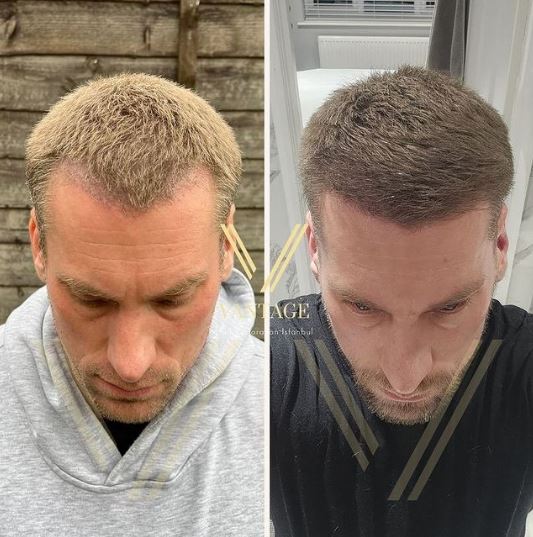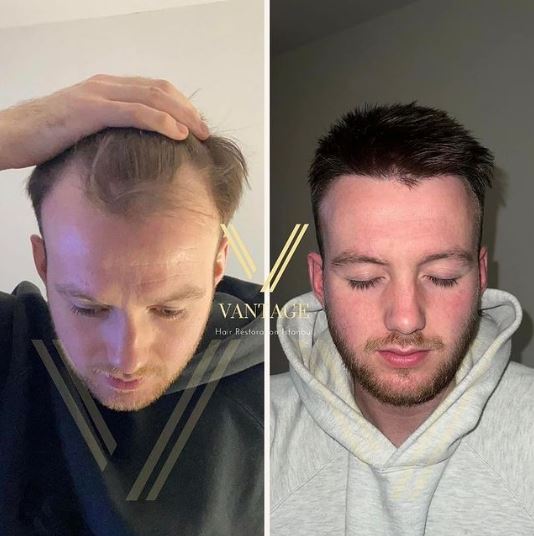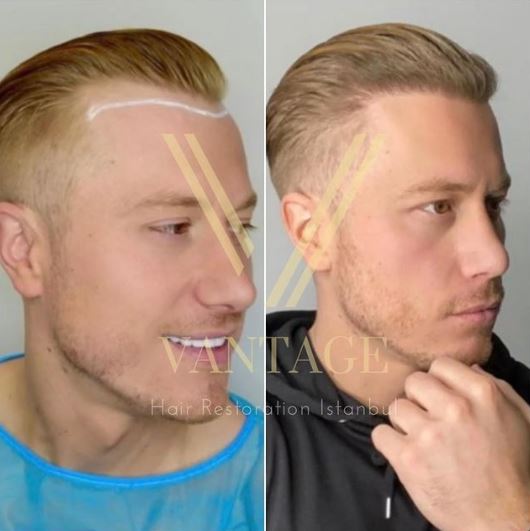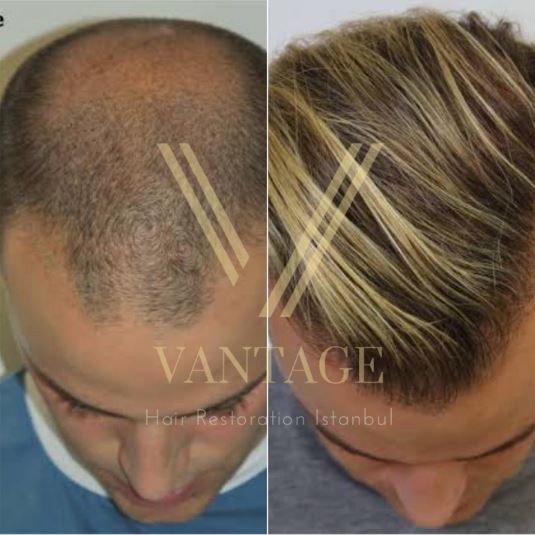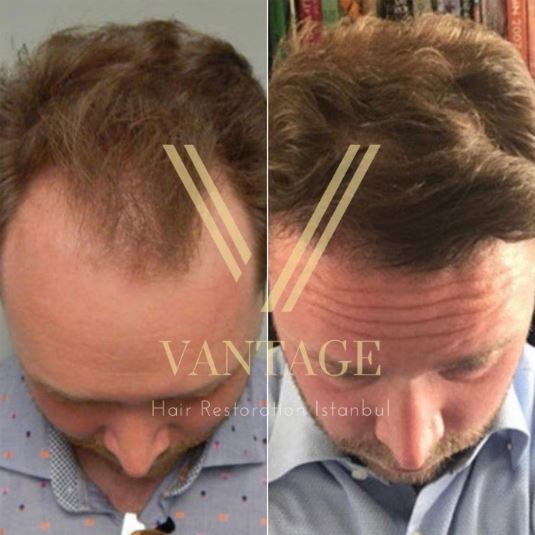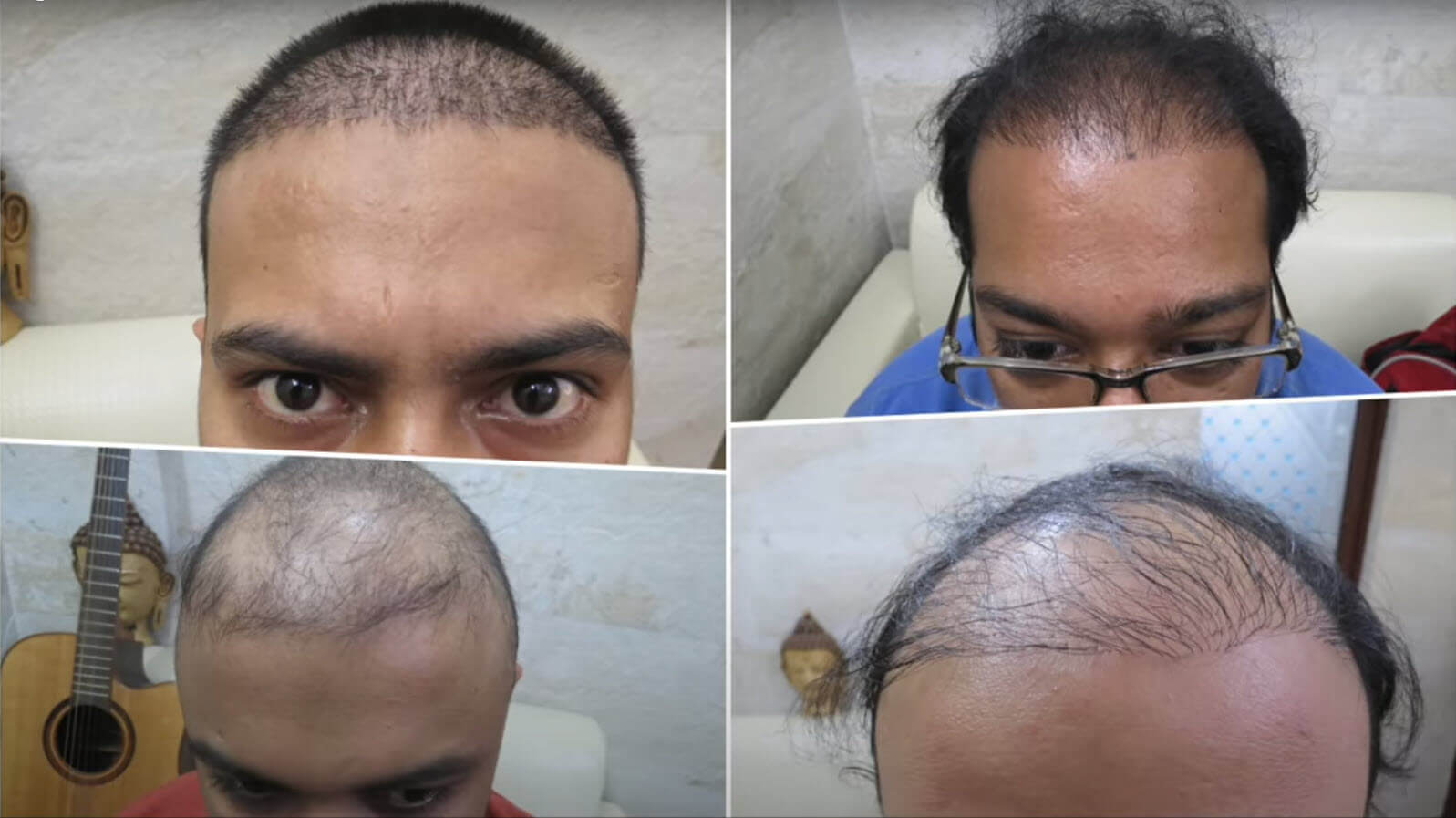
Hair transplants have become increasingly popular worldwide due to their permanent and effective treatment for hair loss. Every year, countless individuals opt for hair transplants to achieve their desired fuller, more voluminous hair. While hair transplant methods can provide effective results with minimal invasiveness, they still require expertise and precision. Although hair transplants have a generally high success rate of around 98%, complications can still arise. Read on to find out the top 5 reasons why a hair transplant goes wrong and how to avoid the possibility of botched results from a hair transplant.
Can a hair transplant go wrong?
As with any medical procedure, there is always a possibility of complications arising from a hair transplant. To minimize the risk of unwanted outcomes, selecting a qualified and experienced surgeon who can perform the procedure with a high degree of expertise is crucial. Moreover, following the post-operative care instructions strictly is also of utmost importance to ensure successful results. It’s essential to have realistic expectations about the results of the procedure. Before considering getting hair transplants, it is always advisable to seek advice from an expert.
How do I know if a hair transplant failed?
The most apparent sign of a failed hair transplant is a pluggy appearance, which occurs when the transplantation angle is not the same as the natural growth angle of existing hair. The need for more surgeon expertise can cause this, the wrong method used, or the unsanitary conditions of the hair transplant facilities. Additionally, visible scars may also indicate a failed hair transplant. If the transplanted hair grows unevenly, with some areas having better growth than others, it could indicate issues with the transplantation process.
It is crucial to seek an expert’s opinion to determine the best treatment to fix the failed results of the procedure.
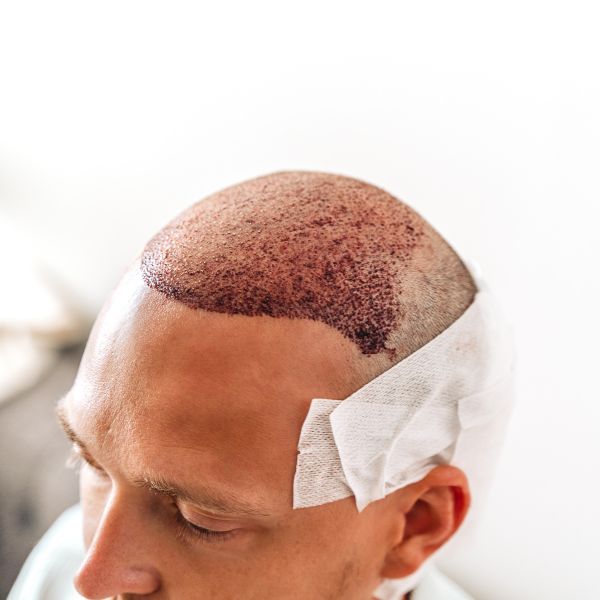
What happens if a hair transplant goes wrong?
When a hair transplant goes wrong, it can result in an uneven and patchy appearance. Besides, one may encounter several potential complications after getting a hair transplant. These complications include the risk of infection if proper hygiene is not maintained, the possibility of necrosis in transplanted hair follicles, which can lead to their death, temporary shedding of existing hair due to shock loss, an uneven look due to mismatched density, the chance of allergic reactions to medications or anesthesia, and the potential for chronic pain or discomfort in the treated areas.
Can bad hair transplants be fixed?
Thanks to the advancement of hair transplant methods, it’s feasible to fix the failed results you’ll get from the procedure. A second hair transplant, or revision hair transplant, can be applied to anyone with a healthy donor area to cover the balding area. However, it’s essential to stress that you should wait at least a year to get a second procedure. Furthermore, choosing a qualified surgeon is essential for achieving better results from the treatment.
Do most people need 2 hair transplants?
Hair transplant methods are considered the most successful and efficient way to treat hair loss, with a success rate of up to 95%. Moreover, when performed by a qualified surgeon with the right amount of grafts, most people don’t require a second hair transplant.
Achieving sufficient density in a single session to treat hair loss may not be possible. You may opt for another procedure to achieve a denser appearance in such cases. However, it is essential to note that you must have enough donor area to treat hair loss naturally. Additionally, it is advisable to wait a year before getting another hair transplant to observe the final results of the first procedure and allow the donor area to heal correctly.
Why a Hair Transplant Goes Wrong? Top 5 Reasons
1. Eligibility for a Hair Transplant

To achieve successful results from a hair transplant, eligibility for the procedure is essential. Thus, the eligibility factors play a crucial role when deciding the hair transplant results. Let’s take a closer look at the factors determining who is eligible for a successful hair transplant.
Who is eligible for a hair transplant?
There are several factors that determine eligibility for a hair transplant procedure. The most crucial one is having a healthy donor area. If you have a healthy donor area, you may be a suitable candidate for hair transplant. Additionally, having overall good health is also essential.
Age is another crucial factor to consider regarding hair transplant suitability. Hair loss is a progressive process that accelerates over time, so it’s essential to determine your current stage of hair loss. Generally, individuals over 20 who have been experiencing hair loss for more than two years are considered good candidates for the procedure.
Can women get hair transplants?

While hair transplant is often favored by men, it can also provide promising hair transplant for women. Additionally, hair transplant options that don’t require shaving have proven to be more effective in women than men. Therefore, women with a healthy donor area and experiencing hair loss can consider undergoing a hair transplant procedure.
How many grafts do I need for a hair transplant?
The key to avoiding a failed hair transplant is the correct number of grafts transplanted at the right angle. So, how many grafts you need for a hair transplant to achieve higher density depends on the extent of your hair loss. Usually, the amount of grafts you’ll need for the procedure is determined via the Norwood Scale, which classifies hair loss by its severity. Feel free to contact our medical consultants to learn how many grafts you need for the procedure in detail.
At what age can you get a hair transplant?
Anyone over 18 may undergo a hair transplant if they have a healthy donor area. However, it is advisable to wait until your hair loss pattern has settled before getting a hair transplant to reduce the risk of experiencing further hair loss after the procedure. Generally, people opt to get a hair transplant in their late 20s or 30s.
It may not be advisable to get a hair transplant at an older age, as the donor area may lose its efficiency over time, and age-related health conditions may occur more frequently. Therefore, getting a hair transplant at the right time is crucial to achieve the best possible results.
Who is not eligible for a hair transplant?
Getting a hair transplant is an exceptional opportunity for people suffering from hair loss; however, it may only suit some. For instance, patients with severe autoimmune diseases or hemophilia may not be the ideal candidates for the procedure. Moreover, you may not get the best results if you do not have a sufficient donor area. Therefore, informing your healthcare professional before getting a hair transplant is crucial to ensure a safe procedure and achieve natural-looking outcomes.
How bald is too bald for a transplant?
Although a hair transplant is a treatment designed to address baldness, it is essential to have an adequate donor area to ensure the success of the procedure. So, being completely bald may not make you the ideal candidate for hair transplant. Therefore, it is crucial to undergo hair transplant surgery before it is too late.
2. Non-Realistic Hair Transplant Expectations

It is crucial to comprehend the limitations of your hair transplant situation and steer clear of unrealistic expectations to prevent failure. You must establish open communication with our surgeon to ensure a successful outcome by discussing your expectations and goals. Additionally, our surgeon can offer valuable advice on what to expect from the procedure and warn you against setting unattainable goals. For instance, it may not be realistic to aim for a high hair density if you do not have enough donor grafts.
What to expect after a hair transplant?
Having realistic expectations after getting a hair transplant to achieve the best results is essential. You may experience some mild discomfort, swelling, and redness during the first week after the procedure, but these symptoms should disappear within a week. During the second week, you may notice some scabbing as a sign of healing. It’s important to avoid strenuous physical activities, direct sunlight, and certain hair care products for the first month.
You may also experience shock loss, but new hair growth will begin, so there’s no need to worry. Hair will continue to grow after the initial development, and you’ll see the final results after 12 months. Managing your expectations and realistic outlook is essential for a healthy recovery process.
What happens if you go bald after a hair transplant?
Even though it’s rare, you may still go bald after a hair transplant. These lie for several different reasons. One and the most crucial reason is having a low quality donor area. You may experience thinning and balding hair after the procedure if your donor area isn’t strong enough. The other reason is having the procedure from an inexperienced surgeon, if the procedure goes wrong, you may experience thinning hair afterwards. [1]
After a hair transplant, when you go bald, you may opt for another hair transplant procedure if you have an adequate donor area. However, waiting for 12 months before getting a new procedure is feasible to ensure a healthy recovery process.
3. Unprofessional Hair Transplant Clinics
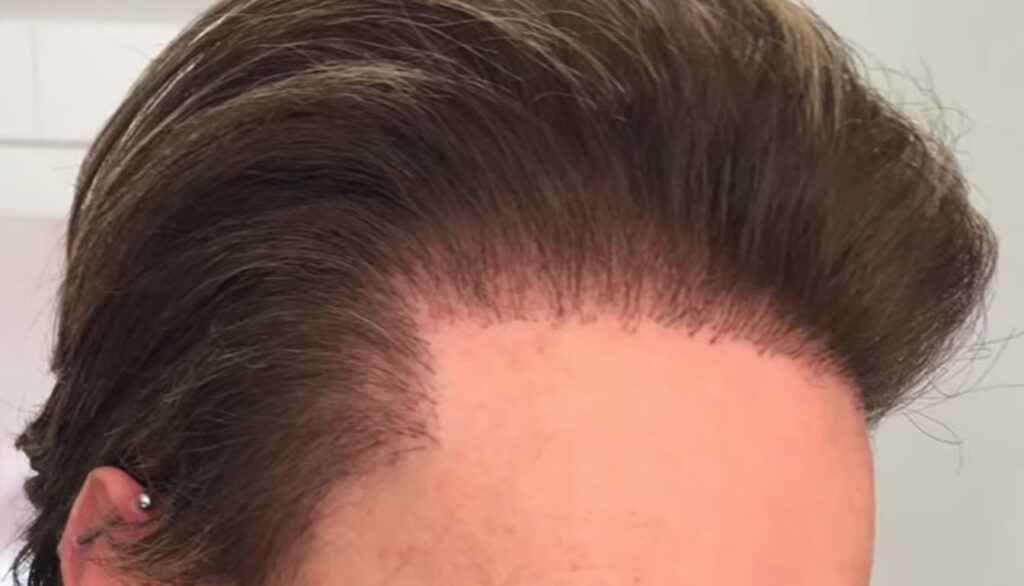
Practice makes everything perfect, and the same goes for hair transplants. Experienced and qualified hair transplant clinics provide high-quality services with cutting-edge equipment. Additionally, a qualified surgeon knows the right angle and method to use for each individual, depending on their specific features, such as the thickness, texture, and density of their hair follicles. Therefore, selecting a professional hair transplant clinic is crucial for a successful hair transplant procedure.
Which country is best for hair transplant?
When considering a hair transplant, it is essential to choose the right location, just as it is crucial to choose the right clinic. Due to the rapidly changing exchange rates worldwide, the cost of a hair transplant can vary significantly depending on the location. Turkey is a well-known destination for medical procedures as it offers cost-effective prices, high-quality services, qualified medical staff, and exceptional hospitality. Additionally, Turkey’s comprehensive medical education system ensures that medical professionals are well-educated and capable of performing hair transplants with a high success rate.
Why do people go to Turkey for hair transplant?
Turkey has become a popular destination for people seeking medical procedures, especially hair transplants. Due to the low exchange rate and cost of living, getting a hair transplant in Turkey is a financially feasible option. The medical professionals in Turkey are highly skilled and have a global reputation, with many surgeons accredited to ISHRS. Additionally, many hair transplant clinics in Turkey offer all-inclusive packages that save money and eliminate the need to book additional services. Considering all of these factors, it’s no surprise that Turkey has become a top choice for those seeking hair transplants.
How to choose a hair clinic in Turkey?
Choosing the best hair transplant clinic in Turkey to guarantee the best possible outcome from the procedure. The appropriate clinic for every individual might differ based on their specific needs. Therefore, ensuring that the clinic you opt for has extensive experience performing hair transplant operations similar to yours is essential.
Moreover, besides sending photos of your hair from specific angles, scheduling a video consultation session can help you get to know your hair transplant team better and give them an idea of your hair’s condition; this will provide you with a clear understanding of the treatment you need without visiting the clinic.
4. Hair Transplant After Care

Giving proper aftercare is essential to prevent failed hair transplant results. Caring for the recipient and donor areas is precisely essential for a healthy recovery. Good post-hair transplant care promotes hair growth and increases hair viability. Unfortunately, some people underestimate the importance of hair care after their procedure, which can lead to a bad hair transplant. Therefore, it is crucial to follow your surgeon’s instructions. By doing so, you will notice a significant difference in hair growth and achieve your desired hair much faster. To ensure a safe recovery process, here are some tips you can follow:
How to care after a hair transplant?
After a hair transplant, avoiding touching or scratching your scalp as much as possible is essential. It is also recommended to stay hydrated and strictly follow the post-operative instructions provided by your surgeon. To alleviate pain and discomfort, it’s essential to take the medications prescribed by the surgeon. Additionally, it is crucial to avoid strenuous activities and excessive sweating. Furthermore, avoiding sun exposure and severe, harsh chemicals would be best. By following these tips, you can ensure your recovery process is smooth and successful.
Can you wear a hat after a hair transplant?
After undergoing hair transplant surgery, wearing a hat is recommended to protect your hair from the sun. However, waiting until the hair grafts have settled before putting on a hat is essential, as it may harm the hair follicles. If you want to wear a hat after the procedure, it is better to opt for a loose one, such as a bucket or fisherman’s hat. Furthermore, you can wear a hat approximately 10-12 days after the procedure. Remember that it’s better to wait longer if you prefer a sturdier hat, such as a baseball cap, as these hats might slow the recovery process.
How to sleep after a hair transplant?
Sleeping after a hair transplant is viable to ensure a healthier recovery process. To prevent any damage or discomfort, you should sleep on your back and keep your head elevated to ensure proper blood flow. Using a neck pillow can also be helpful if you plan on getting a hair transplant abroad.
When can I wash my hair normally after a hair transplant?
After a hair transplant, it’s crucial to avoid getting your scalp wet on the first day. The first wash will be done by medical professionals at the clinic. The bandages will be removed during this wash, and a moisturizing foam will be applied to the recipient area to soften the scabs. It’s left to sit for 15 minutes and then rinsed with warm water. The scalp is then gently pat-dried with sterilized gauze, and an antibiotic spray is applied. After the first wash, the medical team will guide you through how to wash your hair for the next 15 days. It’s recommended to follow the same washing method shown at the clinic once or twice a day. After 15 days, you can start washing your hair normally, but avoid using shampoos containing harsh chemicals. Instead, use a mild baby shampoo.
Do you have to take finasteride after a hair transplant?
Finasteride is an FDA-approved medication commonly used to slow down patterned hair loss, particularly for male pattern baldness. It works by preventing the conversion of testosterone to dihydrotestosterone, which is the leading factor behind male pattern baldness. Taking finasteride after a hair transplant isn’t a must-have; however, if you’d like to take it, please use it by monitoring by an expert; hence, it’s essential to use it for no more than a month. It’s also worth noting that finasteride can affect hormonal balances, so if you decide to stop using it, it’s best to do so gradually. [2]
Does PRP help after a hair transplant?
PRP is a non-surgical treatment that promotes self-rejuvenation and nourishment. This type of therapy involves taking a small amount of a patient’s blood and processing it to concentrate the platelets, which are then injected into the treatment area. This treatment enhances healthy recovery and boosts hair growth after a hair transplant. Getting PRP 10 days after the hair transplant is generally recommended, but multiple PRP sessions are recommended for better results.
5. Hair Graft Rejection

Though uncommon, graft rejection after a hair transplant may occur due to an autoimmune disease or lack of hygiene at the facility where the procedure is performed. Lichen planopilaris (LPP) is a type of hair loss that causes scar tissue to form in place of the hair follicle, which is more common in hair transplantation failure. Both men and women may experience LPP, but it is a rare cause of hair loss. Although the leading cause of LPP is still unknown, its effects can be reduced through PRP therapy or over-the-counter medications.
What is the success rate of a hair transplant?
A hair transplant is an excellent option to treat hair loss efficiently. When it is performed by a qualified specialist using the right technique, the success rate of a hair transplant can be as high as 95%. However, the success rate may vary depending on the individual’s specific needs, such as the extent of hair loss, the quality of the donor hair, and the patient’s overall health condition.
What percentage of hair transplants go wrong?
Although it is uncommon, 2% of hair transplants may go wrong, just like any other medical procedure. To prevent failure, conducting thorough research before the procedure is crucial. Furthermore, consult an expert before the procedure to ensure that you do not have any underlying conditions that might prevent you from achieving successful results.
Do people regret hair transplants?
Many people are pleased with the results of a hair transplant as it has helped them. However, some individuals may express regret or dissatisfaction with the outcome. Achieving full coverage in cases of extensive hair loss and limited donor hair can be challenging. If individuals have unrealistic expectations about the extent of coverage possible, they may regret the procedure. Therefore, it’s crucial to have an open mind about the expectations and results of the surgery. Additionally, it’s essential to conduct comprehensive research before undergoing the procedure.
How long after a hair transplant does the hair look normal?
After hair transplant, the initial signs of hair growth typically start showing up at the end of the second to third month and will continue to grow over time. While it may take around 12 months for the final results of the procedure to be visible, it’s important to stay positive and patient during this time. Rest assured that the hair will eventually look normal, and you’ll be able to enjoy the results of the transplant.
How long does a hair transplant last?

A hair transplant can provide permanent results, but it is crucial to follow proper aftercare procedures for success. The lifetime of the results of a hair transplant may vary for each person, as everyone has a different growth cycle. To ensure healthy and long-lasting hair growth, it’s important to maintain a nurturing hair care routine for the first year after the procedure and throughout your lifetime.
What happens 10 years after a hair transplant?
As long as you maintain proper follow-up care, such as keeping your scalp clean and avoiding any activities that could damage your hair follicles, your hair transplant results should remain stable for a long time. It’s important to note that some hair loss may occur due to hair’s natural growth cycle, but this does not necessarily mean that your transplant was unsuccessful. In fact, it’s normal to experience some shedding before your new hair starts to grow. On average, you can expect to retain about 80% of your transplanted hair even ten years after the procedure.
Is hair transplant permanent?
A hair transplant offers permanent and efficient results when a qualified professional performs it, and follows a healthy aftercare regimen. When it comes to the longevity of a hair transplant, two factors play a crucial role: the methods employed during the procedure and the expertise of the surgeon. In addition, the texture, thickness, and density of the grafts also contribute significantly to the durability of the hair transplant.
If you are thinking about a second hair transplant, get a free consultation from our team of experts, feel free to reach us via our contact form or click on Whatsapp Icon now! We will be more than happy to escort you through your journey of youthful look and enhanced confidence!







